About us
Our Services
Our Expertise
Our Experience
Follow us
Why e2logy?
- We strive to provide superior customer service and ensure that every client is completely satisfied with our work.
- Our engineers are trustworthy, dedicated, and experienced and will go the extra mile to solve your IT issues.
- We are committed to delivering outstanding, cutting-edge IT solutions that add real value that goes beyond what is expected.

What is Supply Chain Optimization?

Supply chains are experiencing increased strain as delivery volumes have never been higher. Suppliers, wholesalers, and retailers all feel pressure due to delays, shipping costs, and price increases by carriers. To meet the new demand, a company’s operations must be adjusted to ensure greater flexibility, efficiency, and cost reduction. Optimization of the supply chain ensures smoother processes and more efficient and profitable business models.
To be effective at the ground level, businesses should integrate optimizations in the cloud into their supply chains today. It is possible to reduce costs and risks by processing supply chain data from multiple sources more quickly.
What is supply chain optimization?
Optimizing a supply chain means making adjustments to ensure it is at its most efficient. A company’s inventory returns are based on several key performance indicators, including operating expenses and operating costs. The goal is to provide the highest profit margins while maintaining the lowest total costs. Managers must balance manufacturing costs, inventory management costs, transportation costs, and customer expectations to achieve these goals.
A long-term approach is best when addressing supply chain optimization because of its complexity. As resource costs vary, carrier changes occur, customer demographics change, and other factors require constant review, what works is a blend of price and service changes over time.
In the event of a merger or acquisition or if a company is concerned about its financial performance, supply chain optimization should be considered first. It might become apparent that the issue is due to several factors, such as high transport costs, poor service levels, or unsatisfied supply chain partners.
Expectations may change or grow ad hoc as the number of suppliers increases. Direct sales capabilities have been embraced by e-commerce companies without being integrated into other channels in response to market demand. Costs and management fragmentation often result from this approach. To improve supply chain standards, supply chain optimization is necessary.
Why is supply chain optimization important?
Organizations benefit from supply chain optimization by retaining a competitive advantage in their manufacturing and distribution processes. Inefficient and costly supply chain management is the result of poor management. Furthermore, it has a higher likelihood of producing delays, inventory shortages, issues with quality, and committing fraud in the supply chain.
It is important to address the following issues during the design of a supply chain optimization process:
- Silos: An organization’s supply chain does not operate in a vacuum; it is part of a broader ecosystem. It is more difficult to manage supply chains effectively and effectively when information is siloed. As a result, a well-designed supply chain process provides all stakeholders with the necessary information so they can quickly and efficiently perform their tasks.
- Client needs: For supply chains to meet customer expectations, innovation and optimization are imperative. A company that wants to meet the expectations of its customers should keep its supply chain as smooth as possible.
- Competitive advantage: The past was characterized by the design of supply chains based on warehouse placement and distribution fleets. As a result, today’s optimization techniques focus on real-time decision support and execution-oriented applications that can build a competitive advantage and protect the brand.
- Agility: When it comes to changing demand, competition, or supply disruptions, how fast can your supply chain respond? Keeping up with the demands of modern consumers requires agile supply chains.
- Sustainability: Environmental and social impacts are enormous when it comes to supply chains. Consumers today are interested in goods produced sustainably and ethically, using environmentally friendly extraction techniques.
Key features of supply chain optimization
Depending on your business requirements, supply chain management optimization can take many forms. The best supply chain optimization software should provide several capabilities, including:
1. Cost reduction
It is possible to significantly reduce the cost of business operations by optimizing the supply chain. You can automate redundant and ineffective processes if they are redundant or inefficient. Deliveries can be made on time and as accurately as possible in order to meet customer demands. Optimizing supply chain costs reduces inventory holdings, which means that less obsolete stock is held in inventory, which means a reduction in costs. The delivery process, logistics, and warehouse capacities can also be optimized to reduce supply chain infrastructure costs.
2. Increased revenues and profits
Supply chain process optimization enables greater visibility and actionable insights, enabling faster responses and improved customer experiences. The bottom line and top line both benefit from this, which increases customer retention and gives the company a competitive advantage.
3. Fulfilling orders more efficiently
Deliveries are faster and customers are happier when operations are streamlined. A faster method of transportation and a more efficient means of delivery can help improve fulfilment.
4. Controlling inventory
To manage the supply chain effectively, supplies, materials, and finished products must be managed effectively. To ensure operational efficiency, SCM functions should incorporate advanced, technology-enabled inventory tracking and maintenance methods.
5. Managing supply chains in an integrated manner
All supply chain capabilities can be managed from a single location using supply chain optimization software. From sales forecasting and cash management to customer loyalty and on-time delivery, companies can gain insight into many aspects of the supply chain system. A supply chain that is transparent from start to finish is possible with such end-to-end visibility.
6. Reporting and analysis
Optimization techniques are built on the foundation of effective data use. The supply chain of a highly optimized business will leverage internal and external data, benchmarks, and trend reports to provide the most accurate and detailed planning possible. Companies must understand supply chain data to improve outcomes and reduce risks, even if they don’t have a crystal ball.
7. Quality improvement
A supply chain quality management strategy focuses on end-to-end production of the product, from raw materials through final delivery to the customer. By enhancing efficiency and reducing waste, supply chain optimization techniques improve efficiency. A quality standard and KPI are established for each stage of the supply chain process, facilitating supply chain planning and optimization.
Best Practices of Supply Chain Optimization
All supply chain decision-makers must devote considerable effort to planning and process management to optimize their supply chains.
Some of the best practices manufacturers use to improve the efficiency of their supply chains are listed below.
1. Develop a supply chain structure
A company’s supply chain structure must be tailored to its specific needs to be efficient. The organization would benefit most from having a sufficient number of workers at each step of its supply chain network.
The creation or implementation of a supply chain structure is not governed by any hard and fast rules. A central strategy is often implemented by managers from different departments within an organization. The strategic planning and implementation approach result in more efficient processes as it integrates planning and implementation.
Having employees with strong interpersonal skills, such as managing relationships and communicating within and outside the organization, is also strategic when it comes to staffing.
2. Enhance and streamline processes by utilizing technology
Invisible supply chains are often caused by manually driven processes. Supply chain processes are uncoordinated, which can be solved by automation. Technology shouldn’t dictate your processes. Consider technology solutions for routing software solutions for processes that are performing below standard, and then review processes to see if technology could improve them. To make strategic planning and performance measurements more accurate and detailed, you need the right technology.
3. Network Optimization in Supply Chains
Efforts to ensure two-way communication across the supply chain can reduce exceptions and ensure proper handoffs. Handoffs across the supply chain would be more efficient if data sharing and real-time communication were implemented. This becomes even more important when a supply chain network gets larger. In addition to maintaining good relationships with retailers and suppliers, companies should consider resolving potential conflicts or improving performance to reach their business objectives.
Supply chain network optimization will benefit from leveraging technology. In handling a delivery exception, digitization and automation reduce workload (pencil-and-paper processes). Unavailability of customers during delivery or delayed shipping times can disrupt the supply chain, for instance. With a digitized supply chain, however, automated alerts, confirmation messages, or push notifications are easier to create so they are less likely to occur. An organization can also gain early visibility into issues by optimizing communications across the supply chain network.
4. Engage suppliers in collaboration
Companies can generate more value from their supplier network by looking beyond purchasing goods and services from them.
An advertising agency’s procurement team can, for instance, ask a lead generation platform provider for feedback. This simple step will allow the agency to gather feedback on how to integrate the platform with the company’s existing lead generation systems and processes.
An agile process can be achieved through collaborative supplier relationships, which can streamline operations and lower costs.
5. Reduce inventory costs through optimization
Inventory quantities should be optimized as part of supply chain management. The cost of holding and storing inventory is high. Forecasting and demand planning is crucial to optimizing your supply chain inventory.
6. Improve forecasting and planning of demand using data
Typically, supply chain managers evaluate the efficiency of a supply chain optimization process by looking at the bottom line: will it result in cost savings? Does it reduce operational costs? An important part of achieving these goals is reducing inventory holding costs, along with increasing revenue. An item’s total cost is largely determined by the cost of storing inventory. So forecasting demand and planning inventory quantities accordingly are critical to optimizing inventory levels.
A proper forecast would also benefit greatly from machine learning. Analyzing data and building analytical models can be automated with machine learning. To put it another way, the capability to identify patterns and analyze data is fundamental to enhancing performance and decision-making.
7. Conduct regular reviews of supply chain operations
Supply chain policies and procedures should be reviewed regularly to ensure compliance, efficiency, and currency. Optimization requires ongoing attention.
An organization’s supply chain council and team members should continually measure the operation of the supply chain in order to prevent bottlenecks and reduce the risk of fraud and theft.
8. Make sustainability a priority
Those organizations that achieve best-in-class performance go beyond cutting costs and achieve as much value from their suppliers as possible. In recent years, companies have taken steps to reduce their carbon footprint in response to global climate protests, consumer pressure, and government intervention.
Sustainability is an area in which the typical supply chain can be improved. By creating a measurable framework of procedures and policies for reducing wastage and carbon emissions across the company’s supply chain, the supply chain council can reduce wastage and emissions.
Final Words
To grow revenue and perform well, you should pay attention to what someone tells you about supply chain management. You must find and eliminate any flaws in your business processes if you want your business to succeed.
Optimizing your supply chain network comes after you have streamlined your systems. You’ll benefit from increased sales and revenue as your customers are satisfied with their experiences with you.
We can help you with this process at E2logy. Whether you’re a small business or a large corporation, we can help you manage your logistics and shipping needs. Get in touch with us today!













